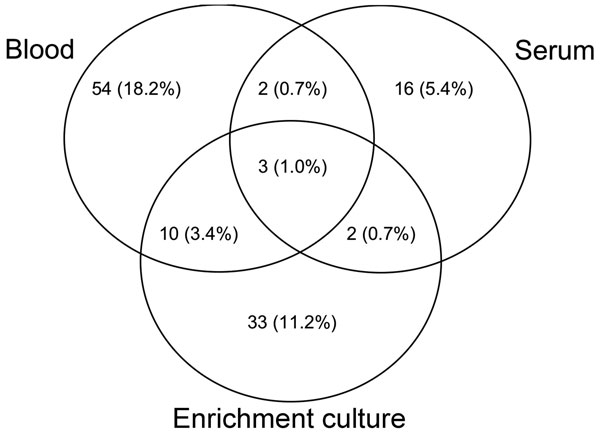Volume 18, Number 5—May 2012
Research
Bartonella spp. Bacteremia and Rheumatic Symptoms in Patients from Lyme Disease–endemic Region
Figure 2

Figure 2. . . Bartonella PCR amplification results from blood, serum, and enrichment blood culture with the Bartonella α Proteobacteria growth medium. Of 296 patients, 120 had positive PCR results in 1 component. Two patients, who had positive PCR results only after enrichment culture incubation and subculture onto agar, are not included. Each circle represents Bartonella PCR amplification results from blood, serum, or after enrichment blood culture. Each number represents the total (%) positive for each of the 4 possibilities within each of the 3 circles. For example, only 3 (1%) patients had positive results from blood, serum, and enrichment blood culture.
Page created: April 12, 2012
Page updated: April 12, 2012
Page reviewed: April 12, 2012
The conclusions, findings, and opinions expressed by authors contributing to this journal do not necessarily reflect the official position of the U.S. Department of Health and Human Services, the Public Health Service, the Centers for Disease Control and Prevention, or the authors' affiliated institutions. Use of trade names is for identification only and does not imply endorsement by any of the groups named above.